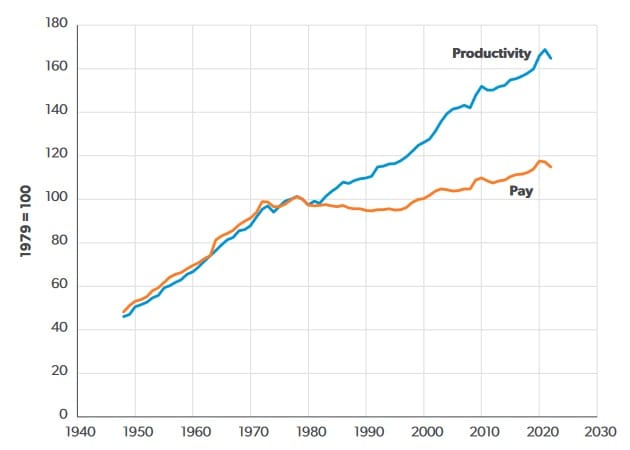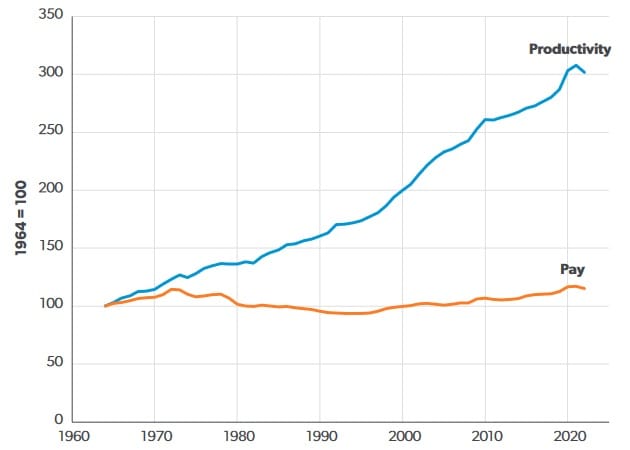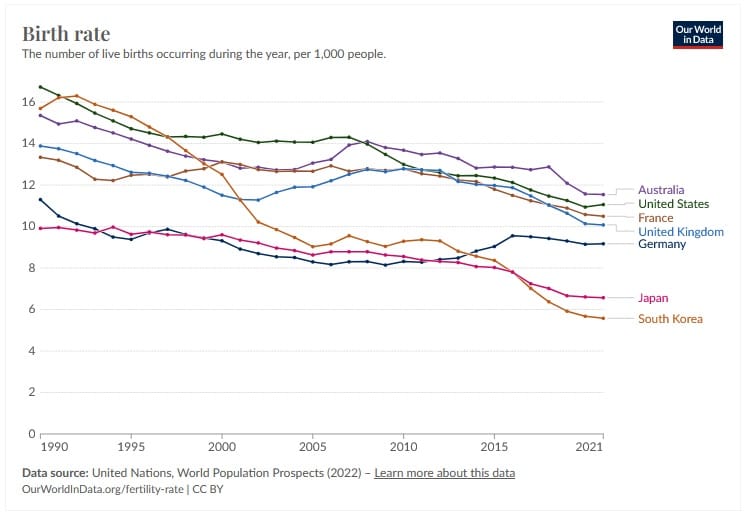Friday Fodder (22/24)

1. Back in the USSR
No, we haven't fallen so far as to be in the hellhole that was the Union of Soviet Socialist Republics (USSR). But Wednesday's March quarter GDP reading was so bad that the last time the Australian economy performed this poorly was when the USSR still existed: 1991.


It's a good thing our governments have been, and plan to continue, spending as if we're going to be in a deep recession for the next few years.

That is, of course, assuming they're spending it on productivity-enhancing endeavours... you know, like the National Disability Insurance Scheme, where 90% of plan managers surveyed "showed signs of fraud" and the responsible Minister, Bill Shorten, reacted by hiring a $300,000-a-year speechwriter in 2022.
I'm only half kidding, of course; perhaps some of the massive asset investment programmes our states are undertaking will pay dividends. I don't know. But what I do know is that the next few years look like they're going to be very challenging and will require tough decisions to be made if we're any chance of righting our proverbial ship.
2. Yes, productivity is still everything
Scott Winship from the American Enterprise Institute's Center on Opportunity and Social Mobility had a very interesting new paper looking at productivity in wages in the US. It turns out that as with just about all the data out there, the methodology chosen will change the results. For example, here are three charts produced by three different think tanks showing productivity and hourly pay diverging to varying degrees:



There are methodological flaws with each approach. As Winship shows, when properly measured, aggregate pay has tracked aggregate productivity using several measures:
"Over 75 or 100 years, aggregate worker pay has closely tracked increases in productivity. Pay differences across industries, across firms within industries, and within firms all seem to correspond with productivity differences."
Where there is a divergence is in median pay, mostly for men, likely due to the shift towards employment from manufacturing to the lower-productivity-growth services sector. The following chart is indexed to a starting point where the median man's level of compensation was well above the median woman's. In fact, it was above productivity as well, which Winship attributes to the existence of male "breadwinner rents—pay in excess of their marginal value to their employer—because of the widespread ideal that a husband should be able to support a family on one income, while mothers should not work".

But that transition is behind us and the US – along with Australia – are now service-dominated economies. Our productivity slowdown and slower wages growth "reflects the nation's affluence". As Winship concludes:
"[I]gnore the doomers: if we can increase productivity growth, that will broadly benefit men and women alike. Other than that, we should focus on expanding opportunities for children and young adults so they have the skills to enter higher-productivity jobs."
So, yes, productivity is still everything.
3. Beware opinion polls
Many Australian politicians live and die by polling; it has been claimed that Scott Morrison did nothing unless he had an opinion poll backing him up – "public policy by opinion poll". One year before the Voice referendum, opinion polls suggested that Anthony Albanese had a 65% majority – and we all know how that turned out.
It turns out that investing based on opinion polls is just as bad. Anyone who took a punt on Mexican or Indian equities when the results looked 'clear' would have been badly burned last week, after polls "drove two days of dramatic trading as the benchmark Sensex index shot for the sky after weekend exit polls indicated a landslide, then tanked in response to live results":
"In Mexico, Claudia Sheinbaum of the incumbent Morena party slightly exceeded expectations and also won a supermajority in the lower house of Congress. The prospect of such a result had fired a rally in India; in Mexico, it caused a huge selloff. Tuesday brought news that the incumbent economic team would stay on, and stocks clawed back about half of their losses"

India's illegal betting markets were also wrong but by a much slimmer margin, predicting the BJP-led coalition would win with between 303 and 306 seats (it eventually won 294). Exit polls, meanwhile, positioned "the ruling alliance at 365 seats".
It's almost as if people with local knowledge and skin in the game have more of an incentive to do their homework. Beware the opinion poll and pretty much any research based on stated, rather than revealed, preferences!
4. Where are all the Korean babies
South Korea has perhaps the worst demographic prospects of any advanced nation, with a birth rate per woman of 0.68 expected in 2024.

That's certainly worrying for the prospects of South Korea as a nation, but you can't hope to fix something without understanding why it's happening. So just why are South Korea's birth rates so low? In a recent essay, Snowden Todd suggests several, perhaps the most compelling of which is the structure of the South Korean economy itself, starting with its unique approach to industrial policy:
"Businesses had to meet ambitious export targets if they wanted the Park government's subsidies... One Roman Catholic priest aptly observed in 1974 that Park's model looked much like Stalin's industrialisation campaign. To meet the targets of Park's own five-year plans, unions were suppressed to keep wages low, and 11-year-olds could work nearly 80 hours a week to make ends meet. A police state was created to keep a check on Communist influence, while rows of apartments grew overnight throughout the slums of Seoul to house South Korea’s budding Stakhanovites."
That model worked to produce growth, "but it also had the effect of concentrating productivity and innovation in the handful of chaebols that enjoyed government favour... [today] South Korea remains a nation whose economic prospects depend on a short list of firms, and where the line between industry and government blurs".
The ten largest, most productive companies in South Korea now account for more than two-thirds of its economy. They pay well and offer good working conditions (by Korean standards), making them sought-after places to work, but "just 14 percent of jobs [are] at companies with over 250 employees".
That has created a two-tiered labour market, where only a select few can enjoy generous wages and perks such as a standard 24-month maternity leave:
"It should be easy to see how this two-tiered job market exacerbates South Korea's fertility woes. Landing jobs at top firms—forget about Samsung, just any large business—requires an immense upfront investment that detracts from family formation. Yet opting out of the rat race means resigning to a job that may well not afford workers—and especially women—much room to have a child."
Anyway, do read the whole thing, which is interesting throughout with obvious implications for Australia.
5. If you missed it, from Aussienomics
The dangers of neopopulism – Whether it's being sold under the banner of a "New Paradigm", "new centrism", "neopopulism", or a "Future Made in Australia", industrial policy will lead to less growth, insipid labour productivity, and a much poorer and more vulnerable Australia.
The upside of falling EV prices – Lower electric vehicle prices are the result of healthy market competition, not a bubble bursting.
Have a great weekend.


Member discussion